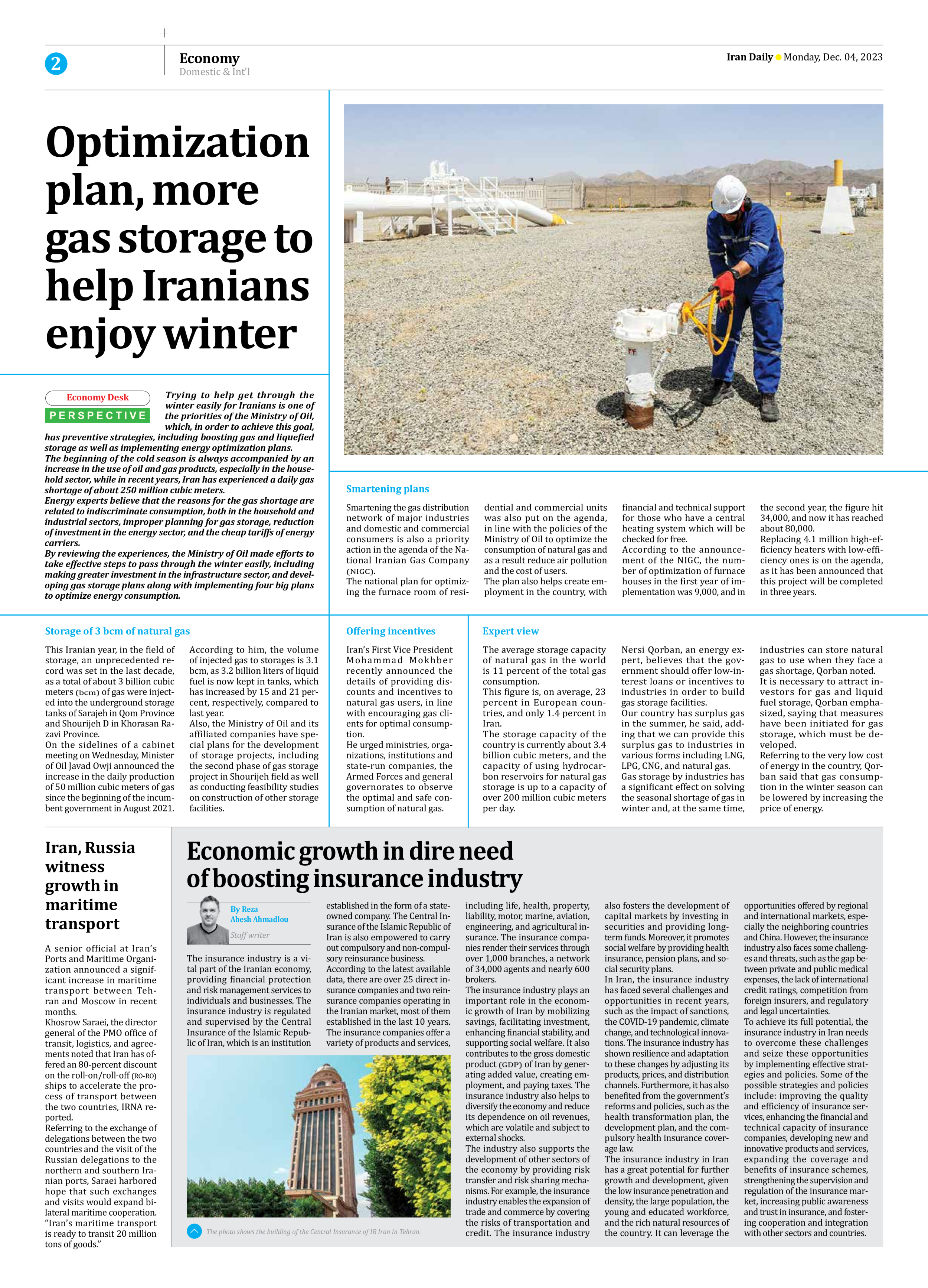
Economic growth in dire need of boosting insurance industry
By Reza Abesh Ahmadlou
Staff writer
The insurance industry is a vital part of the Iranian economy, providing financial protection and risk management services to individuals and businesses. The insurance industry is regulated and supervised by the Central Insurance of the Islamic Republic of Iran, which is an institution established in the form of a state-owned company. The Central Insurance of the Islamic Republic of Iran is also empowered to carry out compulsory and non-compulsory reinsurance business.
According to the latest available data, there are over 25 direct insurance companies and two reinsurance companies operating in the Iranian market, most of them established in the last 10 years. The insurance companies offer a variety of products and services, including life, health, property, liability, motor, marine, aviation, engineering, and agricultural insurance. The insurance companies render their services through over 1,000 branches, a network of 34,000 agents and nearly 600 brokers.
The insurance industry plays an important role in the economic growth of Iran by mobilizing savings, facilitating investment, enhancing financial stability, and supporting social welfare. It also contributes to the gross domestic product (GDP) of Iran by generating added value, creating employment, and paying taxes. The insurance industry also helps to diversify the economy and reduce its dependence on oil revenues, which are volatile and subject to external shocks.
The industry also supports the development of other sectors of the economy by providing risk transfer and risk sharing mechanisms. For example, the insurance industry enables the expansion of trade and commerce by covering the risks of transportation and credit. The insurance industry also fosters the development of capital markets by investing in securities and providing long-term funds. Moreover, it promotes social welfare by providing health insurance, pension plans, and social security plans.
In Iran, the insurance industry has faced several challenges and opportunities in recent years, such as the impact of sanctions, the COVID-19 pandemic, climate change, and technological innovations. The insurance industry has shown resilience and adaptation to these changes by adjusting its products, prices, and distribution channels. Furthermore, it has also benefited from the government’s reforms and policies, such as the health transformation plan, the development plan, and the compulsory health insurance coverage law.
The insurance industry in Iran has a great potential for further growth and development, given the low insurance penetration and density, the large population, the young and educated workforce, and the rich natural resources of the country. It can leverage the opportunities offered by regional and international markets, especially the neighboring countries and China. However, the insurance industry also faces some challenges and threats, such as the gap between private and public medical expenses, the lack of international credit ratings, competition from foreign insurers, and regulatory and legal uncertainties.
To achieve its full potential, the insurance industry in Iran needs to overcome these challenges and seize these opportunities by implementing effective strategies and policies. Some of the possible strategies and policies include: improving the quality and efficiency of insurance services, enhancing the financial and technical capacity of insurance companies, developing new and innovative products and services, expanding the coverage and benefits of insurance schemes, strengthening the supervision and regulation of the insurance market, increasing public awareness and trust in insurance, and fostering cooperation and integration with other sectors and countries.







